
Flood and Dry Weather --Vol.11--
Aiming at a Salmon
Our fishing in the River Gaula in 1997 began with an unexpected happening, flood. As a matter of fact, I had made a device for that season since the previous year. I had planned to improve my fly line to get better presentation of the fly. Anyway, I started the experiment and 2 years later I began to make new trial products. Finally a new fly line called DST line later was completed in spring of 2000.What urged me to this experiment dates back to fishing grilse in 1994, our first year in Norway. In July 1994, I met for the first time a large shoal of grilse that came upstream to me. It is true that I had already had not a few experiences to find salmon as well as grilse that apparently came from downstream in Scottish rivers where I had frequented in those days.
However, the River Gaula in 1994 gave me the first experience to cast the fly at the right moment to the salmon coming from downstream to me so often. It was very thrilling fishing, indeed. Since then I had had the same experience in Gaula so many times every year.

If you settle the fly at the heart of the stream down the river running fast, the line will tighten immediately and the fly will drift very naturally.
At the beginning I could not measure the right timing because I often underestimated the salmon speed. But soon I learned how to measure the timing.
I succeeded in hooking more and more as far as the fish took its course near to me to come upstream. However, when the fish took a faraway course, I often failed in hooking. The fish did not bite the fly or let go of it soon after biting it in spite of perfect timing. There was an unmistakable difference between successful cases and not.
At first I had thought that casting towards farther downstream gave me an advantage of successful hooking. I mean that I could cast the fly towards farther downstream to the fish that came upstream, taking its course near to me, that is, in the heart of the stream or in this bank side than the fish that came upstream, taking a faraway course along the opposite bank. But as I aimed at the fish and cast the fly more and more times I noticed that my success and failure did not depend on whether the course of coming fish was near or far but only on how long I cast the fly. The longer casting I made, the more failure I ended in.
That is applied to not only moving fish but also staying fish. When the near rise reveals fish’s whereabouts, I succeeded in hooking. On the other hand, as the rise was farther away from me, I failed more in hooking. Then when the fish stayed far away from me, I tried to cast the fly so as to make the fly drift in some distance and pass by the fish. This method was much more successful than I cast the fly directly near the fish.

If you want to cast the fly beyond the heart of the stream, first of all, you will have got to extend your back cast high.
To be exact, success in hooking was a result. I found that the fish bit the fly in a very different way. When I cast the fly near to the fish it seemed to prick it or even play with it rather than bite it.
Then I firmly believed that successful hooking depends on good presentation of the fly. If I am not wrong it will be a serious problem. Although I took pains to stand in the water to make long casting, hadn't I caught the fish that stayed at the faraway spot where the fly first settled?
I was so much interested in this problem that I intended to investigate it. Thus in this season of 1997 I carried armful of fly lines with me. They were made in various makers and I had cut and fastened some of them for remodelling.
Ken Sawada Fly Fishing Video Show No.7 includes a lot of scenes taken at that time. Many lines had many knots for this reason.

You will be able to settle the fly first if you cast the line
as if you stuck it into the water surface from high above and turn it just above the water.
as if you stuck it into the water surface from high above and turn it just above the water.
Presentation
In all fly fishing and probably all kinds of fishing, if the following is interpreted in a wide sense, the presentation of the fly holds the key to the success of fishing. What I mean by presentation is not so difficult. It means what state of the fly is carried to the fish.As for the dry fly, the important thing is that the fly drifts naturally on the water surface that the fish stared at. When you fish with wet fly casting down and across, the fly has got to drift as if a real creature crossed the river.
If the line or leader is cast so as to cause some drag, it will pull the fly. The fly that is pulled by the line from upstream looks as if it crossed swimming the river by itself. It must be very attractive to fish.
The problem is when the fly turns into the attractive figure after it settled on the water. If the line or the leader settles without keeping it tight, it will need some time before drifting in good condition. The more time it takes, the longer distance the fly drifts in like the rubbish after settling on the water. During that time the fly can not attract the fish. It means that long casting is in vain.

When the casting distance is more than 35m, it suddenly becomes difficult to cast the line so as to make it tighten as soon as it settles on the water surface.
The ideal casting is that the fly settles on the water, keeping its attractive figure. Then the fly can attract the fish as soon as it settles on the water. The longer we cast, the wider the fishing spot is.
To realize my ideal casting I have got to settle the fly on the water surface, extending the line straight to its full length.
It is not desirable that the belly of the fly line droops down and is swallowed soon into the water or the fly tumbles down from high above, either. As for short casting I realized my ideal casting by using SS1712D rod and salmon leader and also extending my back cast high.
But if the casting distance is longer than 30m it is rather difficult to perform my ideal casting. If it is longer than 35m it is almost impossible without improving the line. That was why I wanted a new fly line that enabled my ideal casting for long distance.
-- To be continued --
- NET SHOP INFORMATION
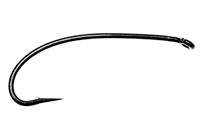
SL6 Black Spey Hooks
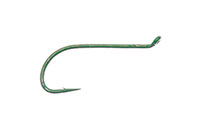
DU3 Limerick Spinner Hooks
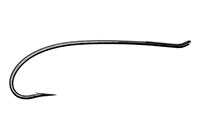
SL4 Single Bartleet Hooks
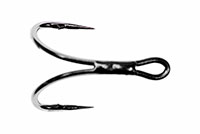
XD1 Tube Fly Double Hooks
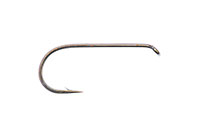
DD2 Flat Perfect Hooks
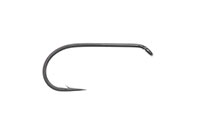
DD1 Black Terrestrial Hooks
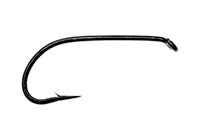
TD4 Old Limerick Wet Hooks
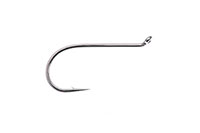
DU1 Silver May Hooks
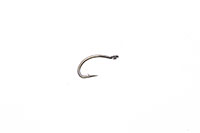
MU1 Flat Midge Hooks
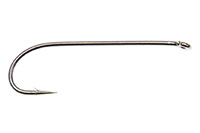
LD3 Long Limerick Hooks
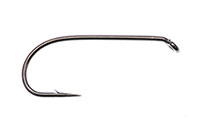
TD2 Summer Sproat Hooks
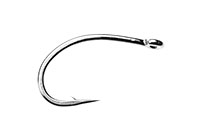
XS1 Tube Single Silver Hooks
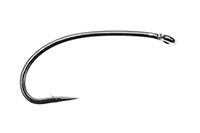
TD6 Siver Sedge Hooks

SL5 Black Spey Hooks

DU3 Limerick Spinner Hooks
- TROPHY CLUB
- FLY SHOW
- EXHIBITION
- MASTERS`
- FLY DRESSING CONTEST Archives
- TRAVELLER Archives
- TACKLE IMPRESSIONS Archives
- ANGLERS` PHOTO GALLERY Archives
- ----------------------------------------------
- トロフィークラブ
- フライショー
- エキシビション
- マスターズ
- フライドレッシング・コンテスト・アーカイヴ
- トラヴェラー・アーカイヴ
- タックル・インプレッション・アーカイヴ
- アングラーズ・フォトギャラリー・アーカイヴ
株式会社サワダ 185-0021 東京都国分寺市南町3-13-4
SAWADA'S INC. 3-13-4 Minamicho, Kokubunji, Tokyo 185-0021, Japan
写真・ドキュメントの無断転載を禁じます。
All the images and documents found on this site are owned by Ken Sawada and may not be used without permission.
But, link to this site is FREE.
Copyright © 2000 - 2025 SAWADA'S INC.. All rights reserved.
SAWADA'S INC. 3-13-4 Minamicho, Kokubunji, Tokyo 185-0021, Japan
写真・ドキュメントの無断転載を禁じます。
All the images and documents found on this site are owned by Ken Sawada and may not be used without permission.
But, link to this site is FREE.
Copyright © 2000 - 2025 SAWADA'S INC.. All rights reserved.
